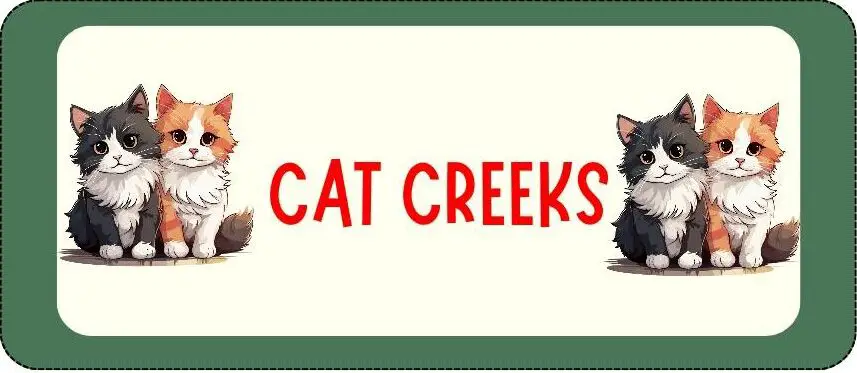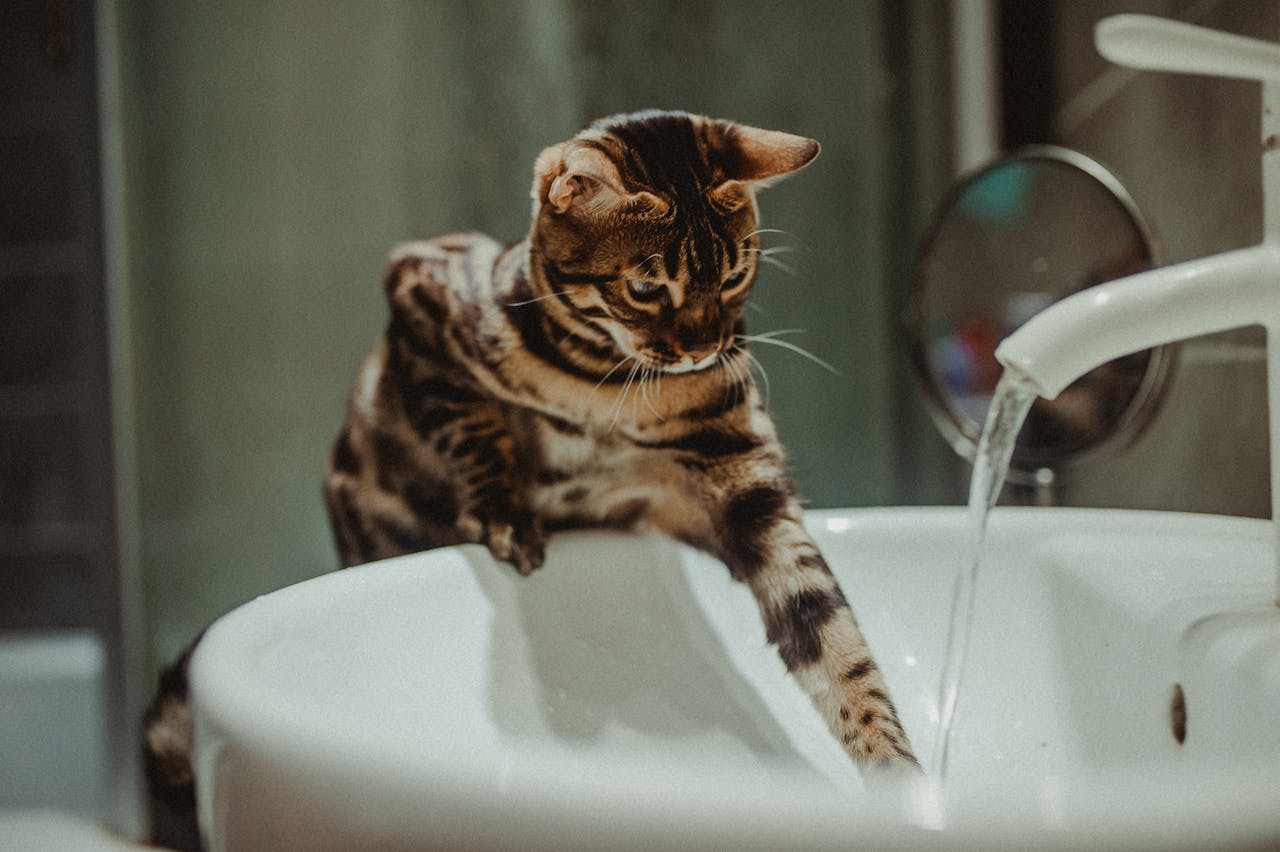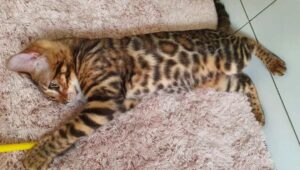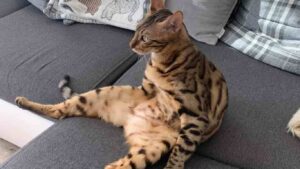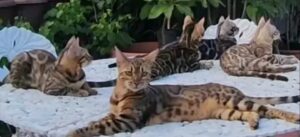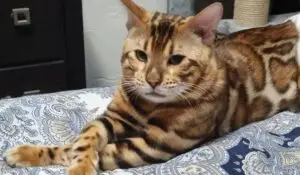Let’s talk about different effective ways of hydrating your cat that won’t drink water at home, you should know these ways.
If you fail to keep your cat hydrated, you will end up having a dehydrated cat, which leads to different health conditions.
In this post, I’ll be sharing different effective ways of hydrating your cat that won’t drink water.
Keep reading to find out more…
How to Hydrate a Cat That Won’t Drink Water
To get a cat that won’t drink to start drinking water, you should consider adding wet food to their diet, as it contains a higher water content.
You can also try using a pet fountain or placing water bowls in different locations to entice them to drink, and adding a bit of low-sodium broth or tuna juice to the water to make it more enticing.
Let’s break it down further…
Effective Ways Of Hydrating Your Cat That Won’t Drink Water
In my opinion as a cat owner, here are some of the most effective ways of hydrating your cat that won’t drink water:
1. Introduce a cat water fountain
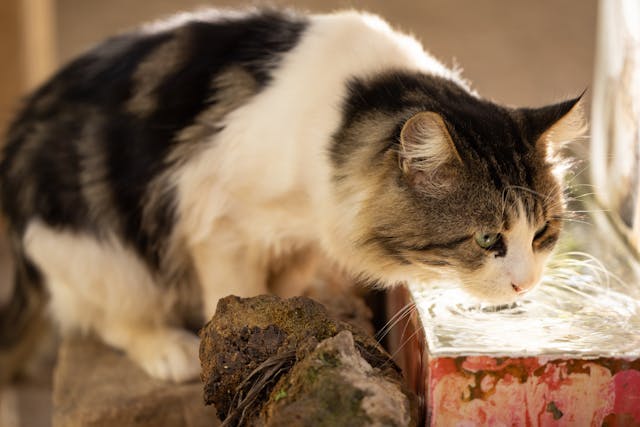
Cats are naturally attracted to running water due to their instinctual preference for freshwater sources.
Based on the information I gathered from other cat owners who own cat water fountains, I can tell you that introducing a cat water fountain can be an excellent way to entice your cat to drink more water.
The continuous flow of water in the cat water fountain mimics a natural water source, making it more appealing and enticing to your cat’s senses.
Moreover, the sound of running water can catch their attention and pique their curiosity, encouraging them to drink.
2. Add ice cubes to the water bowl
If your cat finds stagnant water unappealing, I suggest you try adding ice cubes to their water bowl.
The cool temperature and movement of the ice cubes can make drinking water more interesting for your cat.
Additionally, some cats enjoy playing with ice cubes, which can further engage them and increase their water intake.
Remember to regularly replenish the ice cubes to maintain their interest and keep the water fresh.
3. Switching to wet or canned food
Another effective way to increase your cat’s hydration is by incorporating wet or canned food into their diet.
These types of food contain a higher moisture content compared to dry kibble, helping to supplement their water intake.
By providing your cat with a balanced diet that includes wet food, you can ensure they receive adequate hydration while enjoying a tasty meal.
Consult with your veterinarian to determine the best dietary options for your cat’s specific needs.
4. Place multiple water bowls around the house
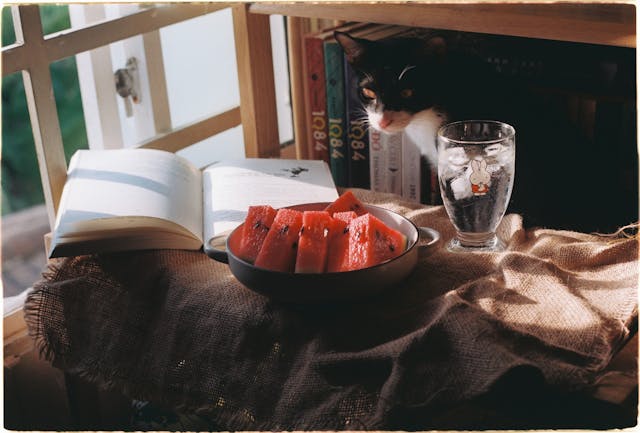
Cats can be territorial creatures, and having multiple water bowls placed strategically around the house can encourage them to stay hydrated.
By providing several water sources, you make it more convenient for your cat to access water wherever they may be in the house.
It also helps to have water bowls in different locations away from their litter box or food areas, as some cats prefer separate areas for these activities.
5. Try using shallow bowls
Some cats are deterred from drinking water if their whiskers touch the sides of deep bowls.
To overcome this, you should try using shallow bowls that allow your cat to drink comfortably without any whisker stress.
Opt for wide and shallow bowls that are easy for your cat to access and ensure they have enough space to drink without any discomfort.
6. Offer low-sodium chicken or bone broth
If your cat is reluctant to drink plain water, consider adding some flavor to their hydration routine.
Low-sodium chicken or bone broth can be an enticing alternative that adds moisture and taste to their diet.
You can offer small amounts of broth as a treat or mix it with their regular water to encourage them to drink.
Remember to consult with your veterinarian to ensure that the broth is suitable for your cat’s specific dietary needs.
7. Use a syringe or pet water dropper
If your cat is not drinking water willingly, you may need to assist them in getting the hydration they need.
Using a syringe or pet water dropper can be an effective way to provide water directly to your cat’s mouth.
It’s important to approach this method with patience and gentleness, making sure not to overwhelm or stress your cat.
Gradually introduce the syringe or dropper and offer small amounts of water at a time, allowing your cat to swallow before administering more.
8. Add a splash of tuna juice to the water
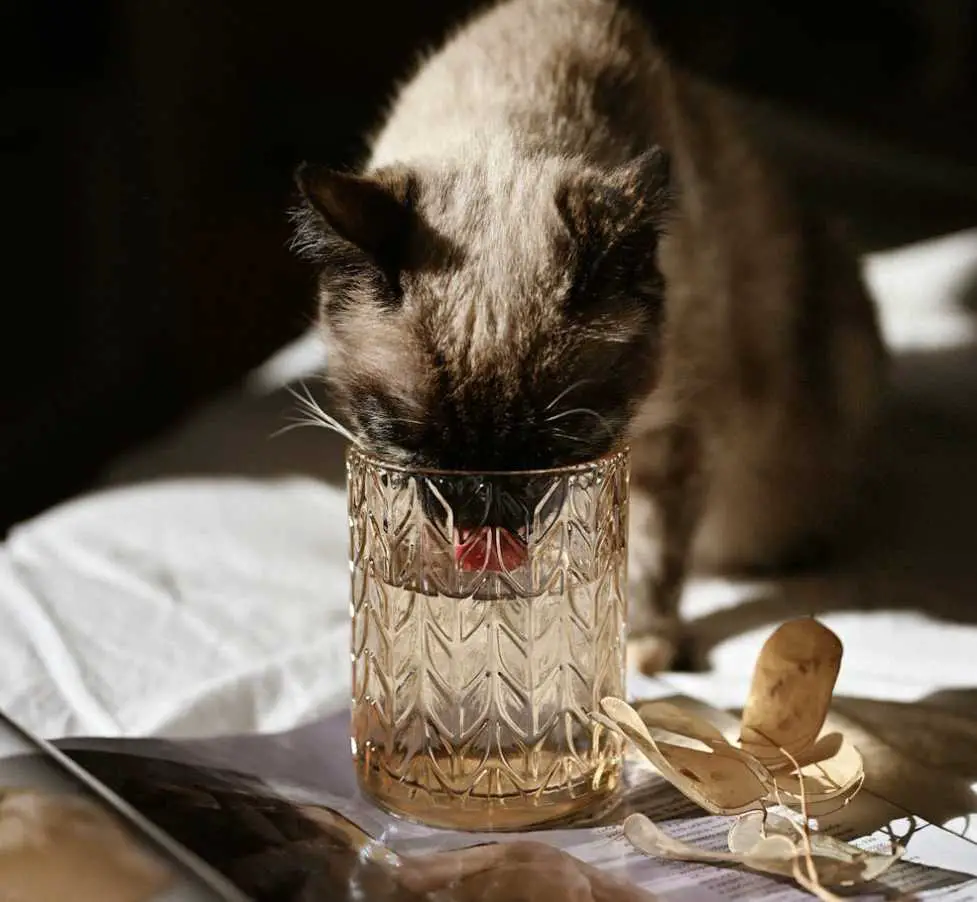
Cats are known for their love of fish, and adding a splash of tuna juice to their water can entice them to drink more.
The aroma and taste of tuna can make the water more appealing and encourage your cat to hydrate.
However, it’s important to use tuna juice sparingly and ensure it doesn’t contain any additives or high levels of sodium that could be harmful to your cat’s health.
9. Consider using a water additive
Water additives can be a great option to entice your cat to drink more water.
These additives are specifically designed to enhance the taste and odor of water, making it more appealing to your feline companion.
Look for water additives that are safe for cats and free from harmful ingredients.
Adding a few drops of a cat-friendly water additive to your cat’s drinking water can help make it more enticing and increase their water consumption.
10. Use a different water source
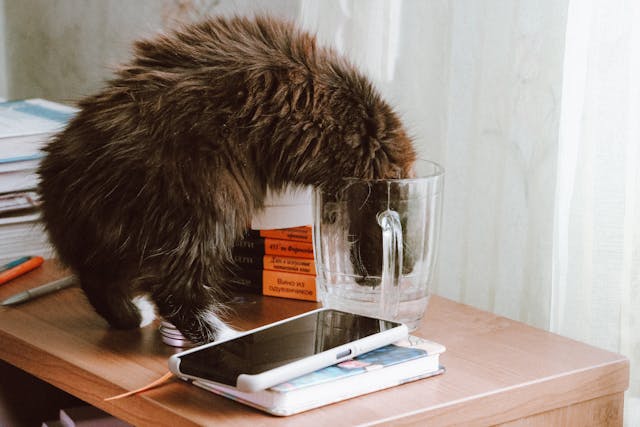
Sometimes, cats can be picky about the taste or freshness of their water.
If your cat is not drinking from their regular water bowl, try offering them an alternative water source.
For example, a pet water fountain can provide a continuous flow of fresh water, mimicking a natural water source and attracting your cat’s attention.
Some cats also prefer drinking from a dripping faucet, so you can experiment with turning on a gentle drip to pique their interest.
Remember to keep the water source clean and fresh to ensure your cat’s health and safety.
11. Mixing water with dry food
If your cat is not drinking water but enjoys dry food, you can try mixing water with their kibble.
Start by adding a small amount of water to the dry food and gradually increase the ratio over time.
This method can increase your cat’s overall water intake while still allowing them to enjoy their preferred dry food.
However, it’s essential to monitor your cat’s consumption and ensure the food doesn’t become soggy or spoiled.
Related: How to keep your cat healthy.
Final Thoughts
In summary, if your cat won’t drink water, it’s important to find alternative ways to keep them hydrated.
Offering wet food, adding water to their meals, or trying a cat fountain can encourage them to drink more.
Regular monitoring and consulting with a veterinarian can help address any underlying health issues and ensure your feline friend stays properly hydrated.
Related: When to talk to a veterinarian about your cat.
Related Questions
How Can I Encourage My Cat to Drink More Water?
To encourage your cat to drink more water, try feeding them wet food or moisture-rich diets. Canned cat food contains a significant amount of water, which can help supplement their hydration. Additionally, you can add a small amount of low-sodium chicken or beef broth to their water to make it more appealing.
What Are Some Tips for Placing Water Bowls Around the House?
Place multiple water bowls in different areas of your home to increase the availability of water. Experiment with various bowl sizes and materials to find what your cat prefers. Also, consider placing water bowls in open areas, away from litter boxes and noisy appliances, to make them more appealing[1][2][3].
How Can I Make Drinking Water More Engaging for My Cat?
Make drinking water a fun experience for your cat by providing shallow water bowls for them to dip their paws in. You can also introduce interactive water toys or a dripping faucet to pique their curiosity. Remember to supervise your cat during these activities to ensure their safety.
What Are Some Signs That My Cat May Be Dehydrated?
Watch out for signs of dehydration such as increased thirst, dry mouth, and dark yellow or brown urine. If you notice these symptoms, consult with your veterinarian to determine the best course of action. Providing fresh, clean water and a balanced diet can help prevent dehydration in cats.
